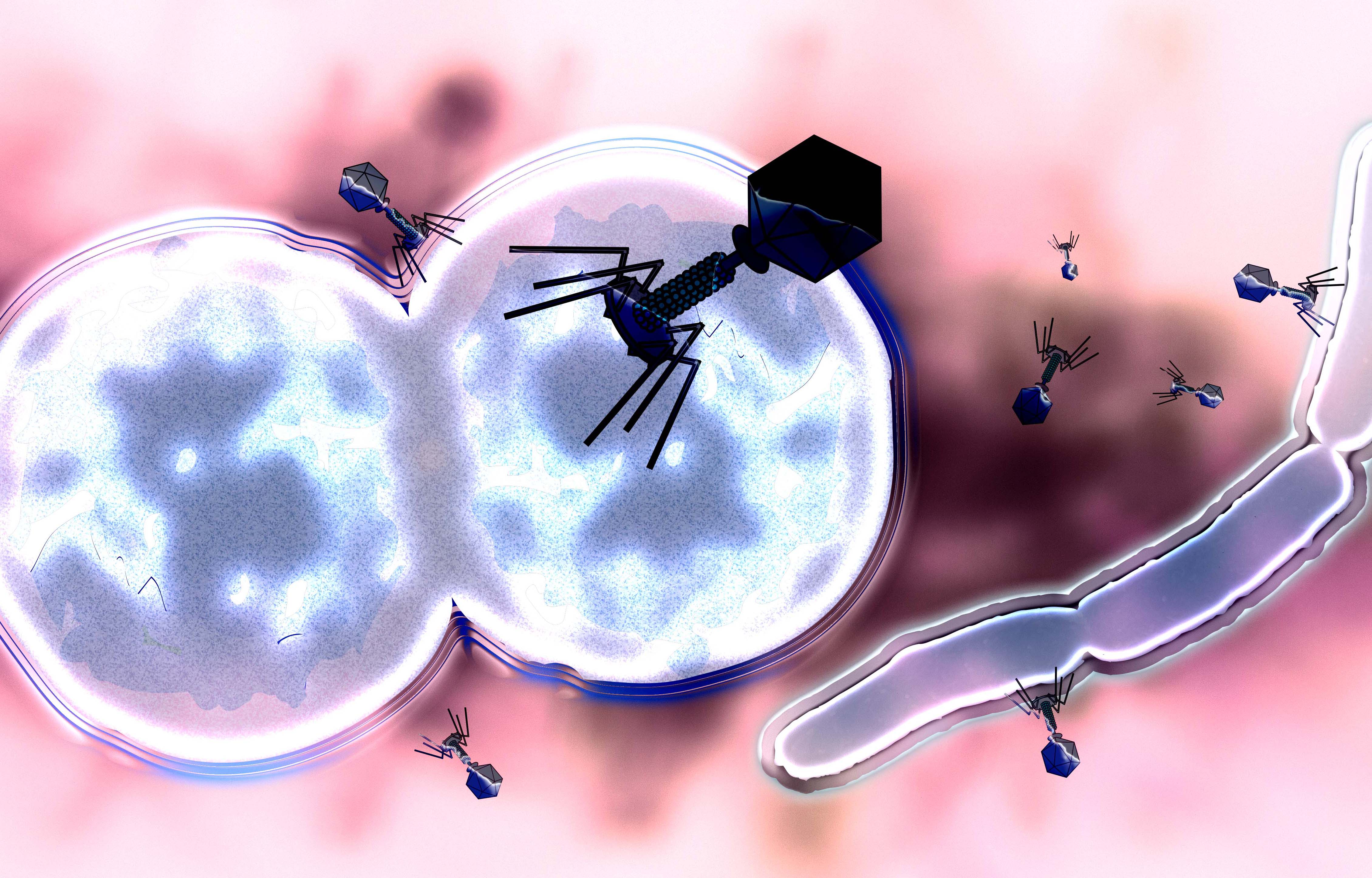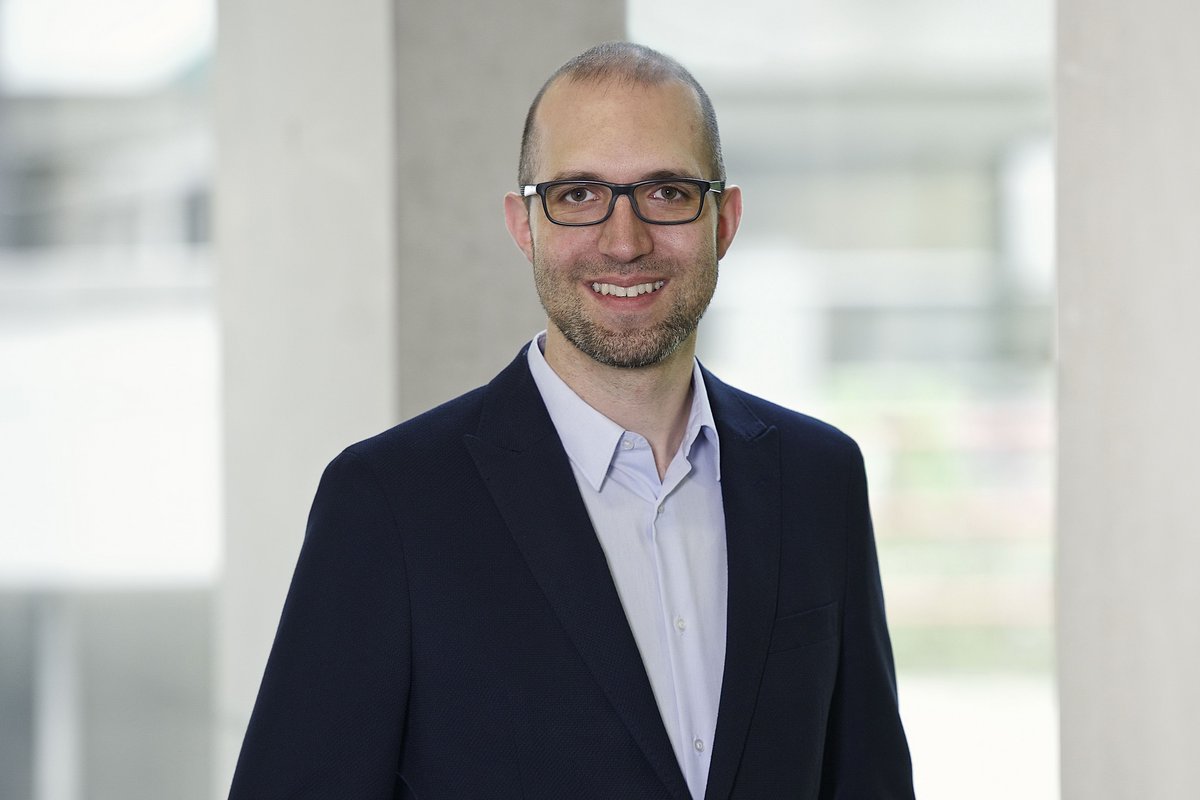
ERC Consolidator Grant
At the University of Konstanz, the research team around chemist Thomas Böttcher studies the chemistry of the interactions between phages and bacteria
We humans are populated by a huge number and variety of microbes. At least as numerous, and perhaps even more diverse, however, are the bacteriophages, or phages for short, in the human organism. Phages are virus particles which exclusively infect bacteria. In case of an infection, the phage usually replicates and thus destroys the bacterial cell. Some types of phages, however, invade the bacterial genome and remain there silently. With every cell division of the host bacterium those dormant phages are copied, too, and thus replicated. Under certain conditions they can be reactivated and produce new virus particles. Dr Thomas Böttcher, head of the Emmy Noether junior research group Biological Chemistry at the University of Konstanz, has now received an ERC Consolidator Grant to study which chemical factors control the transition of phages from a latent to an active state. Such substances might be used for the development of alternatives to antibiotics. From 2020 on, the research team will be provided a funding sum of around two million euros over five years.
Just like humans, bacteria, too, can be infected by specific viruses. These phages are very selective and usually only infect certain bacterial species. Phages inject their genetic information into bacterial cells and trick them into producing new phages. Instead of destroying the bacteria outright, they can also hide in the bacterial genome and remain inactive (lysogenic phages). The impact these lysogenic phages have on the bacteria can be quite different: On the one hand, they can destroy their host; on the other they can also be advantageous for the bacteria. For example, they protect their hosts against lytic infections caused by other phages. Moreover, lysogenic phages serve as effective weapons against competing microbe populations. In many cases, lysogenic phages also carry toxic genes that enable the bacterium to cause human diseases.
The research team around Thomas Böttcher studies the transition from the silent state of lysogenic phages to the state in which they destroy the cells of the bacterium, and the newly produced virus particles are released. Among other things, the team wants to answer the question how this process is controlled and which molecular signals are used to activate dormant phages. “This is a very crucial question that is linked to the fundamental understanding of the dynamics between phages and microorganisms in the human body. Basically, it is a whole new world. We know a lot about the phages’ biology, but their chemistry is largely unknown”, says Thomas Böttcher. Ultimately it is about the interplay between the microbiome, i.e. all the microorganisms, and the phageome, i.e. all the phages in the human body.
In addition to achieving a better understanding of the chemical interactions of microorganisms, the fundamental research carried out by Thomas Böttcher’s research team also aims at potential new antibiotics. Whether controlling the phages’ activity has this potential, too, is one of the research objectives of the ERC project.
ERC Consolidator Grants are designed to support excellent researchers at the career stage at which they may still be consolidating their own independent research team.
Key facts:
- ERC Consolidator Grant for Dr Thomas Böttcher’s Emmy Noether junior research group Biological Chemistry at the University of Konstanz.
- Funding sum of around two million euros from 2020 to 2025
- For research on the chemistry of phage-host interactions in the human body.

